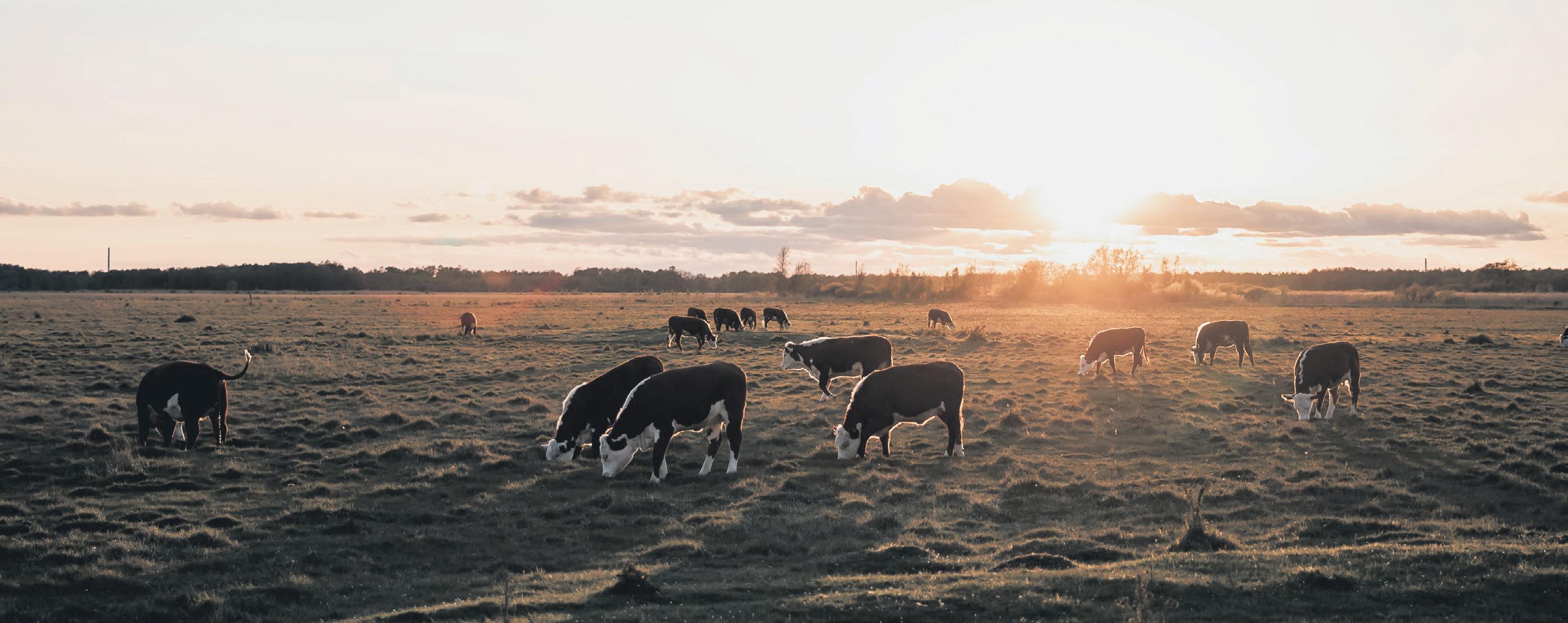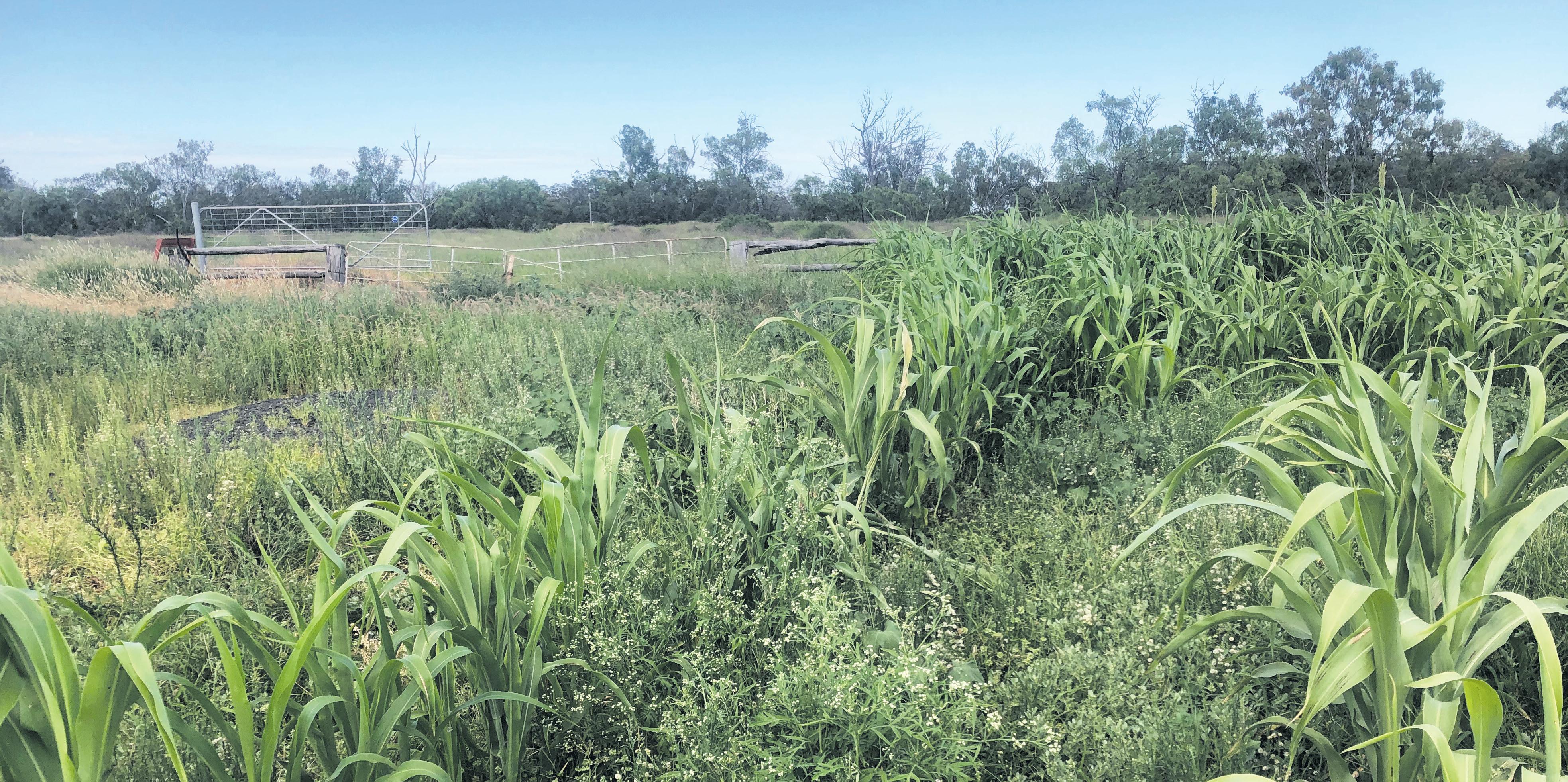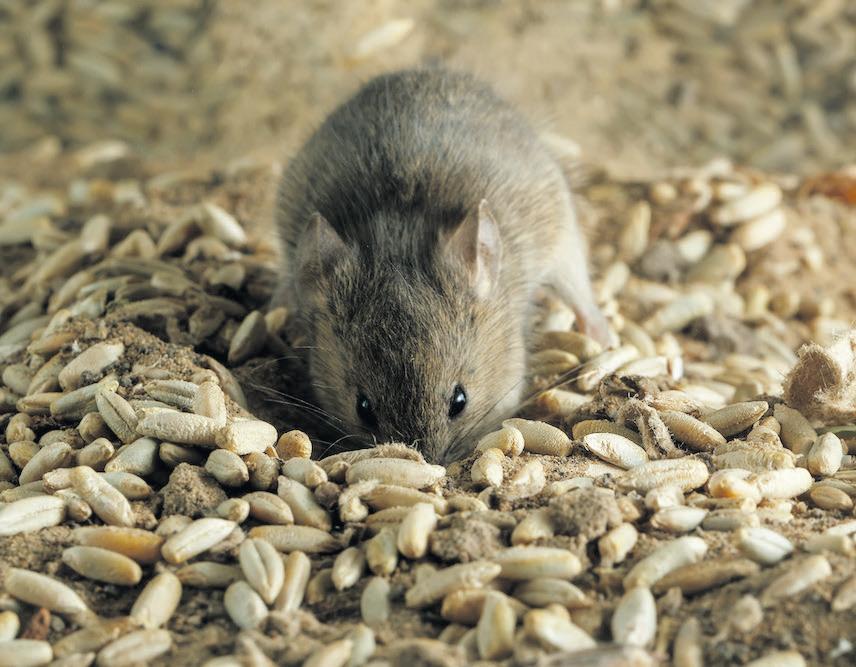
12 minute read
Rural
Recent Cattle Market Reports
GRAFTON
There were 480 head yarded at Grafton Fat Cattle Sale 10th May 2022. This weeks Fat Sale saw a good increase in numbers. Bullocks and Weaners were in good supply, quality of the yarding was mixed. Bullocks sold very well, to top at 424c/kg, with most sales over 400c/kg. Cows saw less competition with not all processors operating, selling cheaper by 10-20c/kg. Restockers were active on the good quality lines of weaners substantial price drop.
Sale Highlights include:
A/c Dale Wearing sold Angus Cross Bullocks 417.2c/ kg averaged 702kg - $2,928.74 p/hd A/c WB & JM Wearing sold an Angus/Brangus Bullock 418.2c/kg weighed 715kg - $2,990.13
A/c Springwood Grazing sold Brangus/Santa Bullocks 416.2c/kg averaged 650.6kg - $2,707.90 p/ hd
A/c PJ Holmes sold Charolais Bullocks 424.2c/kg averaged 677.5kg - $2,873.96 p/hd
A/c B & W Borsato & R Caldieraro sold Angus Heifers 410c/kg averaged 510kg - $2,091.00 p/hd
A/c KJ & JN Ellem sold Angus/Charolais Cows 355c/kg averaged 547.5kg - $1,943.63 p/hd
A/c B & W Borsato & R Caldieraro sold Angus Cows 370c/kg averaged 585kg - $2,164.50 p/hd A/c Timothy Cheers sold a Poll Hereford Cow 349.2c/kg weighed 760kg - $2,653.92
A/c MJ Oates sold Angus Steers 744.2c/kg averaged 172.5kg - $1,283.74 p/hd
A/c DG & LM Hoschke sold Angus Steers 756.2c/kg averaged 204.6kg - $1,547.51 p/hd
A/c BJ Slarke Pty Ltd sold Angus Steers 640.2c/kg averaged 300kg - $1,920.60 p/hd
A/c Jizzy Genetics sold Black Simmental Steers 830.2c/kg averaged 151.7kg - $1,259.14 p/hd
A/c RJ Smith sold Angus Steers 770.2c/kg averaged 192.5kg - $1,482.64 p/hd
CASINO
NRLX Market Report Week Ending Friday 13 May
Agents yarded a total of 1,256 head at the Northern Rivers Livestock Exchange regular prime sale on Wednesday 11 May. Young cattle made up the largest percentage of the yarding along with a good number of cows. A number of good quality lines were offered on the day although the effect on condition due to weather was noticeable in a considerable number of the grown cattle. Most buyers were in attendance including the main processors.
Cow prices were down week this week averaging 322c/kg and reaching a top price of 420c/kg. Heifer prices saw an increase with lighter heifers up to 250kg averaging 634c/kg and topping their category at 766c/kg. Heavier heifers over 250kg averaged 460c/kg and reached a top of 632c/kg.
Bull prices dropped again this week with 19 head sold averaging 328c/kg and 619kg. Lighter steer prices were stronger with those up to 250kg averaging 672c/kg and reaching a top price of 856c/ kg. Heavier steers over 250kg were easier averaging 532c/kg and topping their market at 700c/kg. A large number of bullocks sold on the day averaged 403c/ kg.
Vealer prices saw a drop this week with lighter vealer up to 250kg averaging 652c/kg and reaching a top of 880c/kg. Heavier vealer over 250kg averaged 558c/ kg with a top price of 694c/kg.
George & Fuhrmann held a store sale at the NRLX on Friday 13 May with 1,708 head going under the hammer. Steers topped their category at 894c/kg and averaged 669c/kg and 244kg whilst heifers reached a top of 762c/kg and averaged 618c/kg and 201kg. Cows reached a top price of $1,740 whilst Cows & Calves topped their market at $4,450.
Ray White Rural will hold a store sale at the NRLX this Friday 20 May. Further bookings are welcome.

Scan the QR Code and get friendly advice, service, and the best Advertising rates

Peak body backs calls for independent competition inquiry
NSW Farmers has thrown its support behind a push for the ACCC to investigate reports of dysfunction in local and international pricing in the grains and oilseeds markets.
Australian growers have raised concerns about the relatively discounted prices they receive for their crops locally despite high international premiums, with some suggesting there may be an abuse of market power and supply chain inequities.
NSW Farmers Vice President Xavier Martin – a grain grower from the Liverpool Plains – said there was a clear need for better transparency and performance in the supply chain.
“The war in Ukraine and the ongoing North American drought have restricted grain supply globally, and as a result global prices have gone up, but we’re not seeing that on the local market,” Mr Martin said.
“We’re hearing concerns about the misuse of market power and lack of transparency with bulk handlers, particularly around reporting of stock levels and information on crop quality.
“The end result is lower prices for Australian growers than what we’re seeing on the global market.”
Mr Martin said the special investigative powers of an organisation like the ACCC could get to the bottom of the issue and recommend proactive reforms.
“Growers have far less visibility and information on the market they’re selling to and factors compared to others in the supply chain,” Mr Martin said.
“It is crucial we understand whether the Australian grains we are internationally competitive, but this analysis hasn’t been done since the wheat export market was deregulated back in 2008.
“We know there are supply chain bottlenecks and we know our prices are much lower than global averages, what we need now is to know what we can do to solve this problem, because the Australian economy, growers and regional communities.”
Farmers demand urgent action following outbreak
The confirmed outbreak of a highlyinfectious disease on Australia’s doorstep should be a wake-up call for politicians, NSW Farmers says, with fears of economic catastrophe if it reaches out shores.
NSW Farmers President James Jackson said the Foot and Mouth Disease (FMD) outbreak in Indonesia was far too close for comfort, with a local outbreak tipped to cost the economy up to $60 billion, plunging us into recession.
“This is a disease that will absolutely smash our economy if it reaches out shores,” Mr Jackson warned.
“We have been calling on both sides of politics to make an urgent commitment to action on biosecurity, but neither side seems prepared to do it properly.
“An FMD outbreak is a clear and present danger to Australia, but until we take it seriously we will all be exposed to the risk.”
The disease is a highly-infectious RNA virus that is transmissible between animals such as sheep, cows, goats and pigs. It is light enough that it has, in the past, been found to travel via fog from France to the United Kingdom. Mr Jackson, a trained veterinarian with expertise on the disease, said it was not good enough that Australia was still so woefully unprepared for an outbreak.
“The potential cost to the economy is directly related to how long we take to get on top of it, which is why we’ve been calling for urgent funding,” Mr Jackson said.
“We don’t have enough people trained to respond, and we don’t have enough people carrying out that biosecurity enforcement at our borders.
“Imagine we knew COVID-23 was just around the corner but our governments failed to prepare for it: we’d be absolutely ropable, and this is a very similar situation with FMD.”
Mr Jackson said a sustainable funding model for border biosecurity must be pursued by state and federal governments to protect NSW and Australia’s agricultural industries.

NSW Farmers has welcomed a renewed political focus on rural health this week, but warned all levels of government real reform required more than a simple cash splash.
NSW Farmers member and retired paediatric occupational therapist Sarah Thompson said people outside of the major cities had long experienced inferior health and hospital by the NSW Legislative Council’s Inquiry into Health. “We welcome any boost in funding for regional, rural and remote health, but it’s critical that this programs that deliver better outcomes for improved health across the community,” Mrs Thompson said.
“Delivering good health outcomes requires collaboration with all funding levels, to set out clear strategies to strengthen and fund the sustainability of health services in regional, rural and remote communities, however, this must involve local communities and their local health districts.
“This has been a problem for many years, and what we really need to identify and understand is what is needed to attract and retain doctors in these communities, and why the regional health workforce is so stretched.”
For years people in regional and rural communities have complained of health services, with a reduction in maternity services just one of many concerns. The situation is even worse in remote communities, where people lack access even to simple health services having to drive hours on end for any kind of medical attention – consequently increasing the medical response required.
Mrs Thompson represented NSW Farmers at the NSW Legislative Council’s Inquiry into Health, which released its report, identifying a range of issues facing health services in regional, rural and remote communities. were recommendations regarding recruitment and training of medical and allied health workforce, a review of existing working conditions, and current models of care.
Specially licensed shooters will have renewed access to allowing landholders to better control vertebrate planned legislation to for Regional NSW and Toole. restore the ability of controllers to access and need. “The rise in wild pig Toole said. “I have worked closely holders who were which inadvertently assessed as legal to be prohibited in NSW. control pest species in and these proposed strike the right balance to and that’s what these changes will achieve. providing additional year licences. Category D licences are tightly controlled and can and that there is a special need for the person to possess a Cateogy D
DPI manages major
infestation near Croppa Creek after an observant the weeds hidden in reported it late last year. and is now working as “We have never had the property and we said. appreciate the specialist
to harvest a forage “The harvest contractor had vehicles which have cleaned before they are inspection. find what checks grease or has been treated with a seed sterilant.

new technologies to Henskens said the benefits of new and application of drones to who participates will know how a drone said. and technical skills to operate a drone online training session locations: and Western NSW the latest technological despite a challenging few strengthen and grow
Warning for vigilance on mouse numbers
The state’s peak agricultural body has urged farmers to be extra vigilant in coming weeks, with more and more reports of mouse activity in paddocks.
NSW Farmers Vice President Xavier Martin said there were anecdotal reports of mouse numbers growing in the north of the state, and some farmers had increased baiting in an effort to get ahead of the numbers.
“We need everyone to use their chew cards but also to keep an eye out for mice, and report any rise in numbers,” Mr Martin said.
“The latest official CSIRO-GRDC Mouse Update indicates patchy numbers in NSW that are generally low, but we’re also hearing stories of mice running around farms, so there’s a bit of a mismatch there. What we don’t want to see is a repeat of last year’s mouse plague, so please if you see something, say something.”
Regional communities were swarmed last year as a mouse plague chewed its way through millions of dollars’ worth of crops, damaging farm machinery, vehicles and buildings in the process. People were sickened by ‘carpets’ of mice on highways, and they were even sighted in urban environments sparking fears among Sydneysiders of a rodent invasion.
“A NSW Farmers survey last year found a third of respondents estimated losses from the mouse plague worth between $50,000 and $150,000, with a loss of grain and fodder having the greatest financial impact,” Mr Martin said.
“We strongly advocated for – and secured – a zinc phosphide bait rebate from the NSW Government, but we also saw an awful lot of damage caused by the runaway mouse numbers. Let’s make sure we all get out of the ute and into the paddock to make sure we avoid another plague.”
With experts warning of a resurgence of last year’s mouse plague, Australian vets are joining wildlife advocates in urging consumers to avoid certain rat and mice poisons that are killing pets, birds and wildlife across the country.
According to a survey of Australian vets, more than nine in ten have treated pets for poisoning from anticoagulant rodenticide products that are commonly available on supermarket shelves.
The survey of domestic pet and wildlife vets found that one in five were treating household pets at least once per week for poisoning from rodenticides.
“The most-deadly rodent poisons are known as Second-generation Anticoagulant Rodenticides and are easily purchased from supermarkets and hardware stores like Bunnings,” said BirdLife Australia Urban Birds Program Manager Dr Holly Parsons.
“These products work by causing internal bleeding and are very harmful for pets if they are accidentally eaten.
Cowra Vet Peter Launders saw terrible consequences on both pets and wildlife during the mouse plague in 2021.
“With more people buying and using mouse poison we saw huge numbers of rodenticide poisoning cases,” said Dr Launders.
“It got so bad that we had to ration the use of the antidote and we ran out of dog blood donors and had to put a call out to the community to volunteer their pets.
“Many people didn’t realise that their pet might have eaten a number of poisoned rodents over time, with the impact accumulating until the animal showed outward signs of internal bleeding.”
Dr Parsons urged people to think carefully about their choices when managing rodents.
“While we do our best to ensure baits are placed out of the reach of pets, many people may not realise that some rodent poisons also have a terrible impact on native wildlife,” said Dr Parsons.
“These products can kill not only the rats and mice they are targeting, but any bird or animal that might eat a dead or dying rodent. Slow-moving poisoned rodents can take several days to die – making them easy prey for other animals that will in turn be poisoned.
“BirdLife Australia is campaigning for second generation anticoagulant rodenticides to be federally regulated to be banned from domestic sale and made available for use only by licenced professionals.
“In the meantime, we are calling for retailers like Bunnings to voluntarily take these products off their shelves.
“For consumers seeking to make better choices, try old-fashioned snap traps first, they are the more humane option. If you must use a poison, try a first generation product that uses the active ingredients warfarin, coumatetralyl or diphacinone.
“These products are effective and have fewer consequences for your pets and our beautiful wildlife.”
Report mouse activity by visiting https:// www.feralscan.org.au/ mousealert










